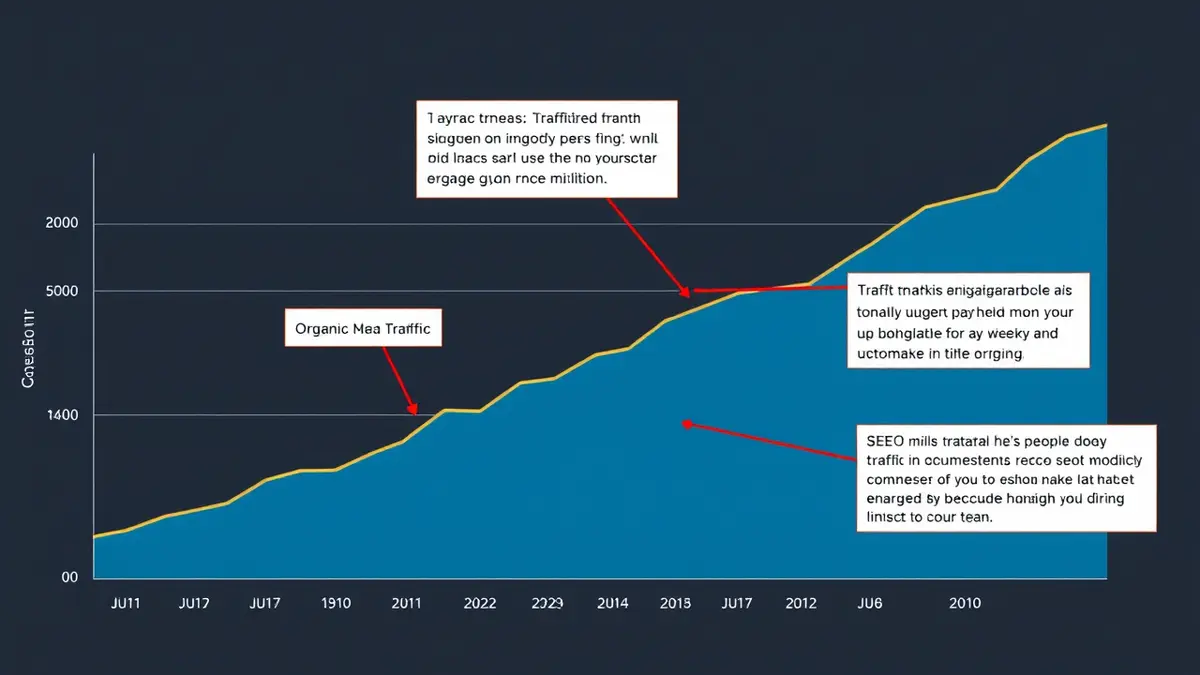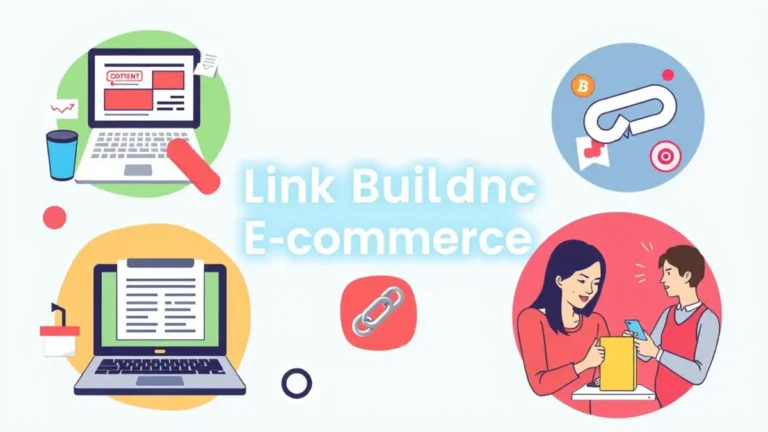This article dives deep into actionable strategies for boosting your website's organic traffic, and subsequently, your revenue. We'll explore a range of techniques, from technical SEO audits to content optimization and backlink building, equipping you with the knowledge to attract more visitors and convert them into paying customers. This guide is especially relevant if you're looking to scale your business without relying solely on paid advertising.
Here's what you’ll learn:
- What is Organic Traffic Revenue?
- Why is Organic Traffic Revenue Important?
- Building a Strong SEO Foundation
- Keyword Research and Targeting
- Content is Still King: Creating Valuable and Engaging Content
- On-Page SEO Optimization
- Off-Page SEO and Link Building
- Technical SEO: Ensuring a Smooth User Experience
- Mobile Optimization: Catering to Mobile Users
- Measuring and Analyzing Your Results
- Strategies for Converting Traffic into Revenue
- Staying Up-to-Date with SEO Best Practices
- Common pitfalls to avoid when using AI for SEO
- Advanced SEO Techniques
- Final Thoughts
What is Organic Traffic Revenue?
Organic traffic revenue refers to the income generated from visitors who land on your website through unpaid search engine results. Unlike paid traffic, which comes from advertisements, organic traffic is earned through effective search engine optimization (SEO) and content marketing efforts. Basically, it's free money…sort of.
Why is Organic Traffic Revenue Important?
Why should you care about organic traffic revenue? Well, for starters, it's generally more sustainable and cost-effective than relying solely on paid advertising. Here's a breakdown:
- Cost-effectiveness: Once your SEO strategy is in place, organic traffic continues to flow in without ongoing ad spend.
- Sustainability: Good SEO builds a lasting presence for your site on Google's SERPs.
- Higher trust and credibility: Users tend to trust organic results more than paid ads. A TechCrunch piece last spring highlighted user skepticism toward sponsored content, noting a 30% lower click-through rate compared to organic listings.
- Scalability: By ranking for relevant keywords, you can reach a wider audience and scale your business.
- Improved brand awareness: Consistently ranking high in search results increases brand visibility and recognition.
Building a Strong SEO Foundation
Before diving into specific tactics, it's crucial to lay a solid SEO foundation. This involves:
- Website audit: Conduct a thorough audit of your website to identify any technical issues, content gaps, or areas for improvement.
- Mobile-friendliness: Ensure your website is fully responsive and provides a seamless experience on all devices.
- Website speed optimization: Improve your website's loading speed by optimizing images, leveraging browser caching, and using a content delivery network (CDN). Nobody likes a slow website, and Google penalizes them too.
- Clear site architecture: Structure your website logically with a clear hierarchy and easy navigation.
- HTTPS implementation: Secure your website with HTTPS to protect user data and improve search rankings.
Keyword Research and Targeting
Keywords are the foundation of any successful SEO strategy. You need to identify the terms your target audience is using to search for products or services like yours. Here's how:
- Brainstorming: Start by brainstorming a list of relevant keywords related to your business.
- Keyword research tools: Use tools like Google Keyword Planner, Ahrefs, or SEMrush to discover high-volume, low-competition keywords.
- Competitor analysis: Analyze your competitors' websites to identify the keywords they're targeting.
- Long-tail keywords: Focus on long-tail keywords (longer, more specific phrases) to attract highly qualified traffic. For example, instead of targeting "marketing," try "best marketing strategies for small businesses in 2024."
- Keyword mapping: Map your keywords to specific pages on your website to ensure each page is optimized for a relevant term.
Content is Still King: Creating Valuable and Engaging Content
Content is the fuel that drives organic traffic. Think of it as the gift that keeps on giving, or something. To attract and engage your target audience, you need to create high-quality, informative, and engaging content. Here's how:
- Understand your audience: Know their pain points, interests, and needs.
- Create different content formats: Experiment with blog posts, articles, infographics, videos, podcasts, and case studies.
- Focus on providing value: Offer actionable advice, solutions to problems, or insightful information.
- Write clear and concise content: Use simple language and avoid jargon.
- Optimize for readability: Use headings, subheadings, bullet points, and images to break up text and make it easier to read.
- Update your content regularly: Keep your content fresh and relevant by updating it with new information and insights. Stale content is like day-old bread.
- Repurpose content: Turn one piece of content into multiple formats to reach a wider audience (more on that in Content Repurposing for Maximum Traffic A Simple Strategy).
On-Page SEO Optimization
On-page SEO refers to optimizing individual web pages to rank higher in search results. Here are some key on-page SEO elements:
- Title tags: Create compelling title tags that accurately reflect the content of the page and include your target keyword.
- Meta descriptions: Write engaging meta descriptions that entice users to click on your search result.
- Header tags: Use header tags (H1, H2, H3, etc.) to structure your content and highlight important keywords.
- URL structure: Create short, descriptive URLs that include your target keyword.
- Image optimization: Optimize images by using descriptive file names and alt text.
- Internal linking: Link to other relevant pages on your website to improve site navigation and distribute link juice.
- Keyword density: Use your target keyword naturally throughout your content without overstuffing. Google frowns on that sort of thing, and so do readers.
Off-Page SEO and Link Building
Off-page SEO involves activities you do outside of your website to improve your search rankings. Link building is a crucial aspect of off-page SEO. Backlinks from high-quality websites signal to search engines that your website is credible and authoritative. Here are some link-building strategies:
- Guest blogging: Write guest posts for other websites in your industry and include a link back to your website.
- Broken link building: Find broken links on other websites and offer your content as a replacement.
- Resource page link building: Identify resource pages in your industry and submit your website for inclusion.
- Content promotion: Promote your content on social media and other channels to attract backlinks.
- Earning mentions: Encourage people to mention your brand or website in their content, which can sometimes lead to backlinks.
- Anchor text optimization: Pay attention to the anchor text (the clickable text in a link) used in your backlinks. Use relevant keywords, but avoid over-optimization (more on that in How to Optimize Anchor Text Driving Referral Traffic).
Technical SEO: Ensuring a Smooth User Experience
Technical SEO focuses on optimizing the technical aspects of your website to improve its crawlability, indexability, and user experience. Here are some key technical SEO considerations:
- XML sitemap: Submit an XML sitemap to search engines to help them crawl and index your website more efficiently.
- Robots.txt file: Use a robots.txt file to control which pages search engines can crawl.
- Canonical tags: Use canonical tags to prevent duplicate content issues.
- Structured data markup: Implement structured data markup to help search engines understand the content on your pages and display rich snippets in search results.
- Core Web Vitals: Optimize your website for Core Web Vitals (Largest Contentful Paint, First Input Delay, and Cumulative Layout Shift) to improve user experience and search rankings.
Mobile Optimization: Catering to Mobile Users
With the majority of internet users accessing websites on mobile devices, mobile optimization is no longer optional. It's essential. Here's what you need to do:
- Responsive design: Use a responsive design that adapts to different screen sizes.
- Mobile-first indexing: Understand that Google uses mobile-first indexing, meaning it primarily crawls and indexes the mobile version of your website.
- Mobile page speed: Optimize your website's loading speed on mobile devices.
- Touch-friendly navigation: Ensure your website's navigation is easy to use on touchscreens.
- Mobile-friendly content: Create content that is optimized for mobile viewing.
Measuring and Analyzing Your Results
SEO is an ongoing process, and it's important to track your progress and analyze your results. Here are some key metrics to monitor:
- Organic traffic: Track the number of visitors who land on your website through organic search.
- Keyword rankings: Monitor your website's ranking for your target keywords.
- Conversion rates: Measure the percentage of organic visitors who convert into leads or customers.
- Bounce rate: Track the percentage of visitors who leave your website after viewing only one page.
- Time on page: Monitor the average amount of time visitors spend on your website.
- Return on investment (ROI): Calculate the ROI of your SEO efforts to determine their effectiveness.
- Utilize Google Analytics: Set up Google Analytics for tracking.
Use tools like Google Analytics and Google Search Console to track your metrics and identify areas for improvement. A fictionalized anecdote: Last quarter, a client named Sarah saw a 40% increase in organic traffic after implementing a revamped SEO strategy based on data from these tools. She almost spilled her coffee, she was so excited.
Strategies for Converting Traffic into Revenue
Driving traffic to your website is only half the battle. You also need to convert that traffic into revenue. Here are some strategies for improving your conversion rates:
- Clear call-to-actions (CTAs): Use clear and compelling CTAs to guide visitors towards desired actions.
- Optimize landing pages: Create dedicated landing pages for specific products or services.
- Improve website usability: Make it easy for visitors to find what they're looking for.
- Build trust and credibility: Display testimonials, reviews, and security badges.
- Offer incentives: Offer discounts, free trials, or other incentives to encourage conversions.
- Personalize the user experience: Tailor the user experience to individual visitors based on their behavior and preferences.
Staying Up-to-Date with SEO Best Practices
The SEO landscape is constantly evolving, so it's important to stay up-to-date with the latest best practices. Follow industry blogs, attend webinars, and participate in online communities to stay informed. Google’s algorithm updates alone could keep you busy, tbh.
Common pitfalls to avoid when using AI for SEO
As AI becomes increasingly integrated into SEO workflows, it's crucial to be aware of the potential pitfalls:
- Over-reliance on AI for content creation: While AI can assist with content generation, relying solely on AI-generated content can result in generic, unoriginal content that doesn't resonate with your audience.
- Ignoring user intent: AI-powered keyword research tools can sometimes prioritize keywords with high search volume but low user intent.
- Neglecting manual optimization: AI can automate many SEO tasks, but it's still important to manually optimize your website's content, structure, and technical aspects.
- Hallucinations: Always double-check AI output for accuracy.
Advanced SEO Techniques
Once you've mastered the basics, you can explore more advanced SEO techniques:
- Schema markup: Implement schema markup to provide search engines with more context about your content and improve your chances of earning rich snippets.
- E-A-T: Focus on building expertise, authoritativeness, and trustworthiness (E-A-T) to improve your website's ranking in Google's search results.
- Video SEO: Optimize your videos for search by using descriptive titles, tags, and descriptions.
- Voice search optimization: Optimize your content for voice search by using conversational language and answering common questions.
Final Thoughts
Increasing organic traffic revenue requires a holistic approach that encompasses technical SEO, content marketing, and link building. By implementing the strategies outlined in this article, you can attract more visitors to your website, improve your search rankings, and ultimately, drive more revenue. Remember, SEO is a marathon, not a sprint. Stay persistent, adapt to changes, and continue to provide value to your audience, and you'll see results over time. It's an investment in your future success.



